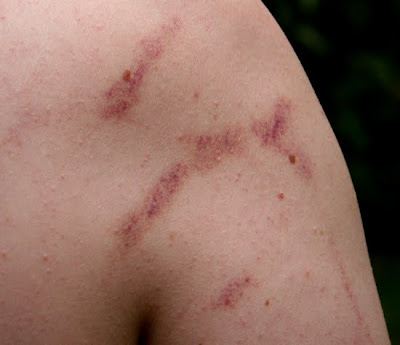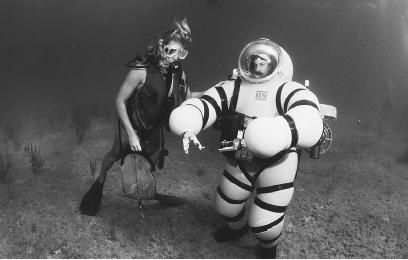I don't think you're right about this part. Gasses are compressible, liquids and solids are not, and even if the air volume inside the suit is compressed, it doesn't necessarily mean you will be squeezed by it. Air at depth is always compressed relative to it's volume at the surface after all, but we don't always experience a squeeze.
I don't mean to appear arrogant, but please check my profile/qualifications/experience. I am right.
Having said that... you have every right to go drysuit diving without bothering to equalise your suit on descent. Please be my guest....
Boyle's Law is a given certainty. Any air space within an unequalised drysuit (flexible container) will reduce in volume upon descent.
It is not called a Gas
Law because it only happens occasionally....
As the volume of that air space, surrounding the body, diminishes it will eventiually cause a squeeze to be felt. The
onset of this squeeze is
affected by the material composition of the suit, but eventually the volume will be sufficiently reduced with any suit to cause squeeze pain and damage.
Looking at the picture you posted the bruises actually appear to correspond to what would be folds in the suit. My guess is if you eliminate the folds you eliminate much of the squeeze factor as well.
No drysuit is a 'perfect' skin-tight fit. The POINT of a drysuit is to allow an insulating layer of air to exist between the suit and the diver. Therefore, the suit is ALWAYS bigger than the diver. There is always more suit material surface, than skin surface underneath it.... thus when compressed, the suit
must fold in places - especially in areas of joints (shoulders, elbows, knees and hips).
As that (bigger) suit is compressed tightly against the skin by pressure, it will crease and fold. That will cause the pinching most commonly noticed during squeezes. Thicker drysuit material (i.e. neoprene) will delay this effect, but will not prevent it.
Also, any undergarments worn below the drysuit will be squeezed into/against the flesh - causing the same 'pinching' pain and damage.
In addition, you seem preoccupied by the 'pinch' factor of a squeeze. It isn't
just a case of the material pinching you. There is also a 'suction' effect on the skin, as the compression tries to suck your body to fill the air space. That can cause bruising in the same way as a 'hickey' type kiss will cause bruising by sucking on the skin.
To understand this (if you've never experienced a 'hickey'...just seal your mouth over your arm and suck on it. The reduced air pressure in your mouth will draw the skin of your arm inward to your mouth. It will also draw blood to the surface of the skin, as capillaries burst.
Now...consider the huge difference in pressure between what you can achieve by sucking with your mouth (max 10psi)...and the pressure that is exerted by atmospheric pressure at depth (14.7 lbs per square inch PER atm).







